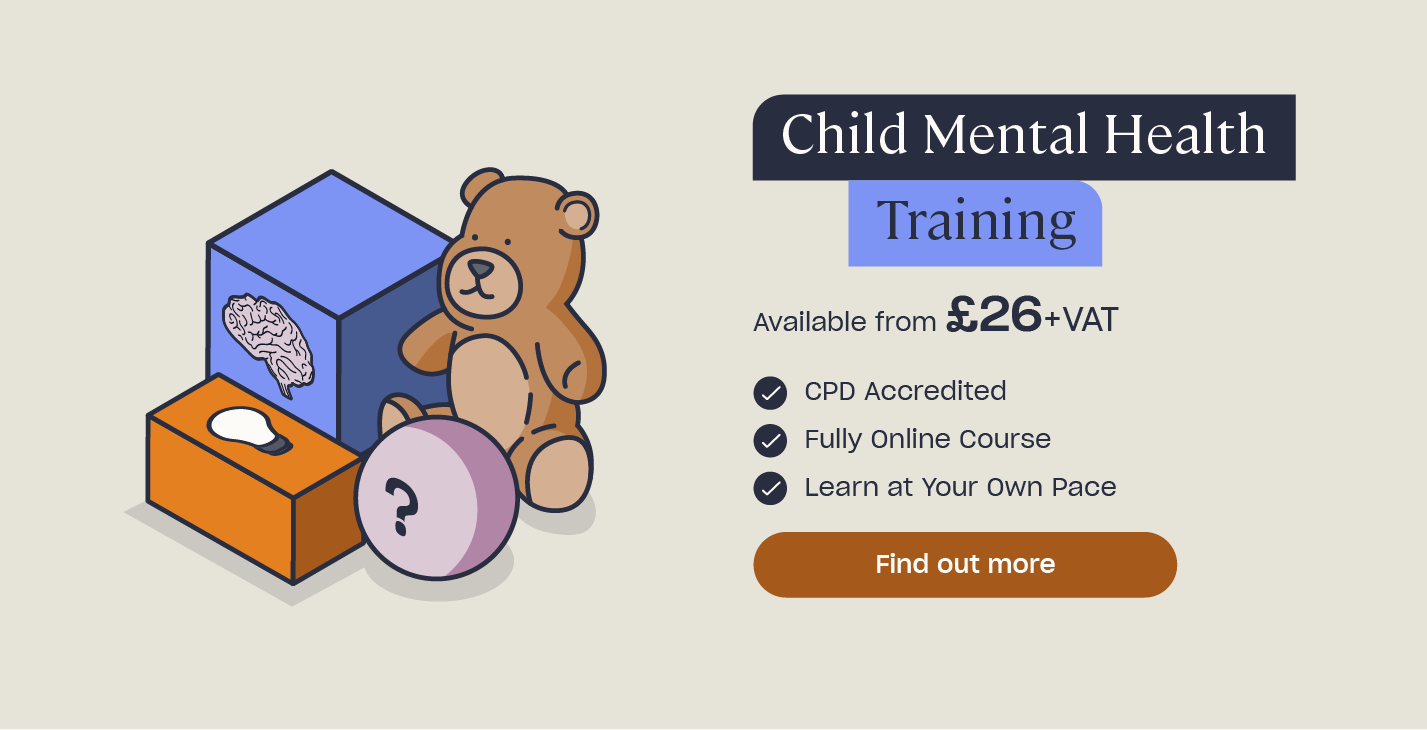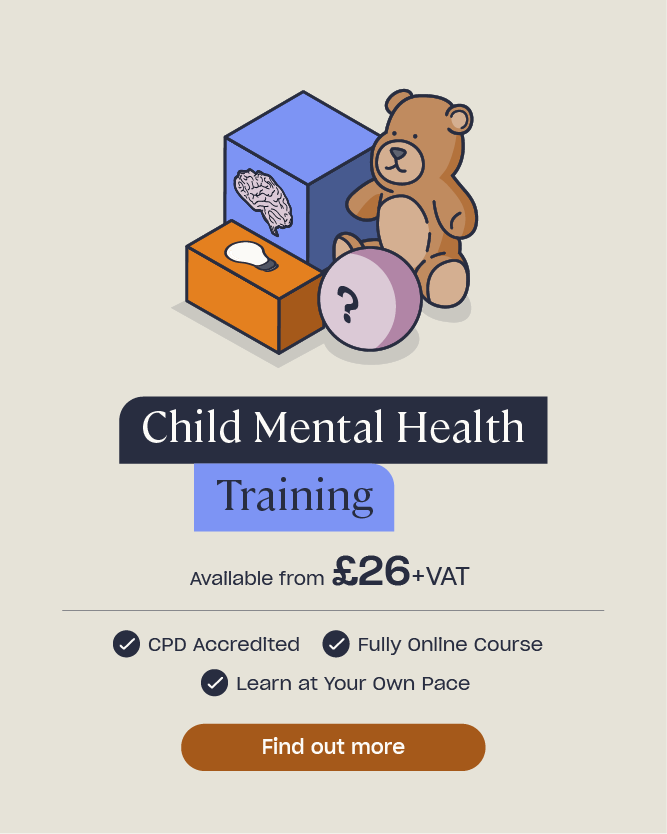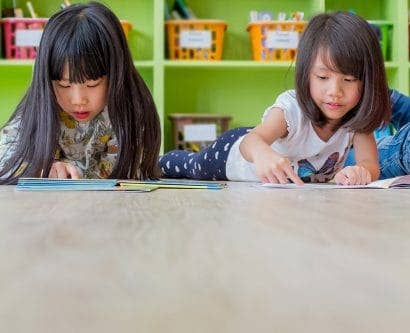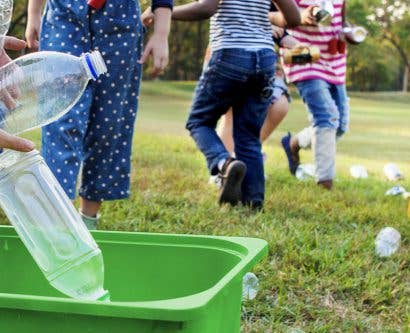How to Help a Child With Anxiety in the Classroom
In the UK, anxiety disorders are estimated to affect 5-19% of all children and adolescents. This means that in an average classroom there could be up to five children who are struggling with anxiety of some description. As a teacher, therefore, you may regularly encounter children experiencing anxiety.
In this article we will look at what anxiety is, how it may manifest itself in school age children, and some potential underlying causes of anxiety in children and young people. We will then provide some tips and strategies for helping to support children with anxiety in your classrooms.
Although we refer to teachers and school settings, the advice in this article would benefit anyone working or caring for children and young people.
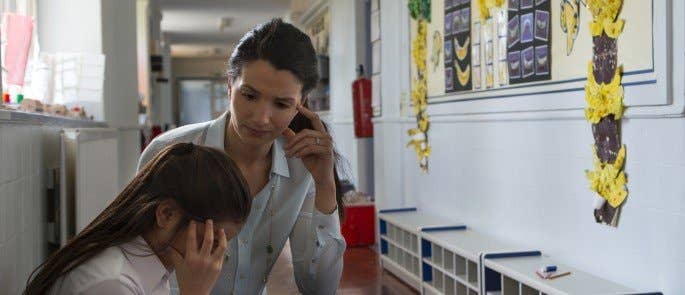
What is Anxiety?
Anxiety is a normal, human response to stressful situations. It is part of our fight or flight response; it triggers our brain’s in-built alarm bell system, which tells us something isn’t right, and that we need to deal with it. It makes us feel more alert, focuses our mind on the situation, and prepares our body physically – in case we need to run away.
This is a useful short-term reaction to high-stress situations. However, if we are experiencing it over a prolonged period of time – or as a response to most everyday situations – it can significantly impact our mental health.
All children will most likely experience short-lived anxiety when faced with isolated stressful times, such as during exam time. Anxiety becomes a problem when it interferes with everyday life, and it can persist, whether or not the child is aware of its cause.
What Causes Anxiety in School Age Children?
Just like our physical health, our mental health fluctuates and many people, including children and young people, will experience periods of anxiety in their lives. Later in this article, we will look at some of the different types of anxiety disorders that may affect children – although not all anxious children will have an anxiety disorder.
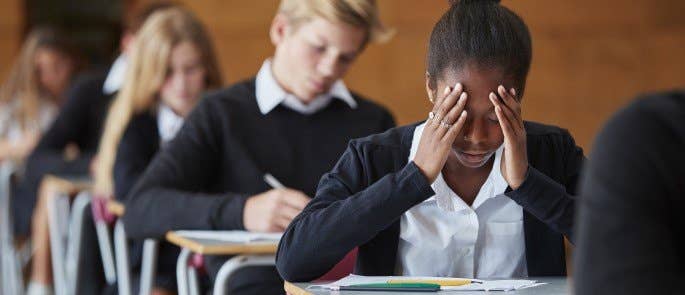
Risk Factors
There are certain circumstances which have been identified as making children more vulnerable to anxiety, and mental ill health in general. Whilst these risk factors can indicate that a child might be more likely to experience anxiety, it does not mean they will. Similarly, it is quite possible that an anxious child may not have any of these factors in their life, but still experience anxiety.
- Research suggests that anxiety disorders are more common in females than males (Beesdo et al, 2009).
- There are disorders or needs that anxiety often coexists with. Many autistic children experience anxiety, as well as a large proportion of children with ADHD.
- Long-term physical illness can impact a child’s anxiety levels.
- The home environment can affect the likelihood of anxiety. Potential risk factors here could be:
- Poverty or homelessness.
- A parent who suffers with mental ill health.
- Parental substance abuse.
- Parental involvement in crime.
- Separated or divorced parents.
- Being a young carer.
- Neglect or abuse.
- The death of a loved one.
- A child who experiences discrimination or severe bullying may also be at greater risk.
- Sustained, unaddressed difficulties at school can be a risk factor.
When supporting mental health needs, we should try to be aware of and strive to minimise risk factors, whilst maximising protective factors.

Types of Anxiety in Children
The following are some of most common anxiety-related disorders affecting children and young people:
Separation Anxiety Disorder
Separation Anxiety is where a child experiences anxiety at being away from their main caregiver. It is a normal developmental phase which children experience between the ages of eight months and three years. It generally tends to ease at around two years old.
However, Separation Anxiety Disorder is diagnosed when symptoms are excessive for the child’s developmental age, cause significant distress, and interfere with their daily functioning.
Generalized Anxiety Disorder (GAD)
Social Anxiety Disorder
Specific Phobias
Obsessive Compulsive Disorder (OCD)
Panic Disorder
Post Traumatic Stress Disorder (PTSD)

How Does Anxiety Affect School Performance?
Anxiety can present a significant barrier to learning. If a person is in a constant state of emotional alert, they are going to find it difficult to engage with and benefit from the learning opportunities that you are providing.
Social, Emotional and Mental Health is one of the four areas of Special Educational Need categorised by the SEND Code of Practice. Children with this area of need may require support to thrive at school.
Some children may have diagnoses of anxiety disorders, but a great many will not. You will need to use your professional skill to observe and assess their needs, and then put plans into place to help support them. The key to supporting any child with Special Educational Needs is building a detailed and holistic picture of them and their needs (EEF, 2020).
If you do suspect that a child is suffering from anxiety, you should discuss your assessment with your SENCo who will be able to advise and help you to plan to meet their needs.
Signs of Anxiety in a Child
Children, especially young children, may not be able to recognise or articulate what they are feeling as anxiety.

The following signs might alert you to the possibility that a child is suffering from anxiety, if they are:
- Becoming socially withdrawn.
- Isolating themselves and avoiding spending time with their friends.
- Becoming clingy with caregivers and supporting adults.
- Seemingly nervous or ‘on edge’ a lot of the time.
- Lacking concentration in class.
- Lacking confidence.
- Suffering panic attacks or feeling overwhelmed.
- Being irritable, tearful, upset or angry.
- Reporting trouble sleeping, including having nightmares or bedwetting.
- Experiencing changes in appetite.
- Regularly complaining of stomach ache or nausea.
- Feeling faint, trembling or experiencing wobbly legs.
- Feeling hot or sweating more than usual.
- Having attendance issues.
Some children may also express their anxiety through challenging behaviour in the classroom. In these instances, it is important that you look to the underlying cause of the behaviour, whilst remaining consistent in your approaches to preventing and managing challenging behaviour. Our article Challenging Behaviour in the Classroom looks at some of these strategies in detail.
Want to Learn More?
Build on your existing knowledge or learn new skills to help you in the classroom with our wide range of Training Courses for Teachers and Schools. Find everything from Challenging Behaviour to Child Mental Health.
Tips and Strategies to Combat Anxiety in the Classroom
Improving the mental health of our children and young people is a huge priority, in wider society and in education. The government has recently committed significant funding to support this.
As a teacher, you have the potential to make a significant difference to a child suffering from anxiety, and their experience in your classroom can become a protective factor in itself.
The following are some top tips and strategies that you can integrate into your practice to help you do this:
Curriculum
Learning about mental wellbeing is now part of the statutory health curriculum for state-funded primary and secondary schools.
Your curriculum should include specific teaching on the areas stated in the DfE guidelines. By planning lessons, assemblies, and activities which encourage children to recognise and explore their emotions, you keep an open dialogue on mental health. It can also help them to think about when they need support and how to seek it.
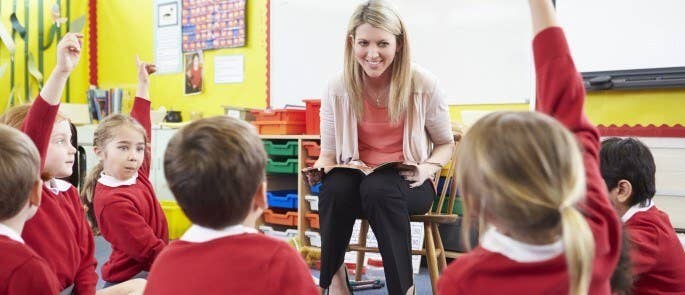
Raising awareness can help all children in the class, and especially benefit children who may be facing mental health difficulties.
Whole-school initiatives such as promoting a growth mindset can also impact positively, especially if a child’s anxiety is connected to academic performance, or notions of failure.
Communication
When supporting any need in school, communicating with the individuals and their parents and carers is essential. Some children will mask their anxiety in school and only express it at home. This does not mean that those children do not require support at school. By keeping home-school communication open then there is a greater chance of finding effective strategies.
If any safeguarding concerns arise whilst assessing a child’s anxiety, these should be communicated in the appropriate way, following your school’s safeguarding procedures.
Whole Class Strategies and Tips
Mindfulness
Mindfulness works by focussing the mind on something concrete in the moment. For example, on your breathing. When you are concentrating on your breathing, your mind is distracted from your anxiety. The physical act of breathing deeply will also help to relax you.
Allocating some time out of each day for mindfulness practice as a whole class can help children with anxiety. This might include breathing exercises, age-appropriate guided meditations, or time for mindfulness colouring. You can use these as ‘brain breaks’ within lessons. This can be as simple as pausing the lesson, asking children to close their eyes and pick out 5 sounds that they can hear, then carrying on.
Mindfulness practice can also be used to support individuals who are struggling with anxiety. It can be incorporated into a daily routine. For example, if a child experiences high levels of anxiety at break times, you might use the practice before or after. Or it can be there as a tool when they feel their anxiety levels increasing.
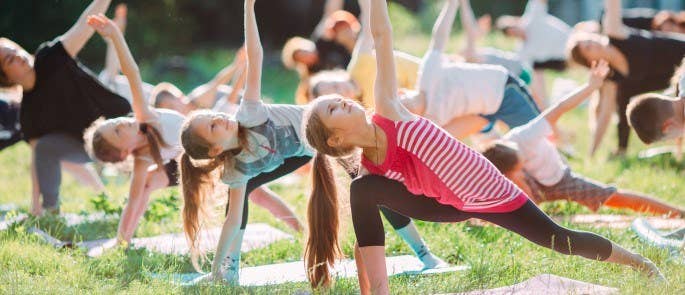
Get Moving
Exercise can help alleviate stress, and knowing the benefits of exercise in relation to mental wellbeing is one of the outcomes of the PSHE programme of study. Alongside dedicated PE lessons, you can take the opportunity to incorporate movement breaks and short bursts of exercise into your teaching. There are many video resources available, some combining exercise and key learning, such as the BBC’s Supermovers activities for key stages one and two.
Go Outside
The mental health charity, Mind, reports benefits of spending time outside in green spaces. Get creative with your planning and see where outside activities can be incorporated. You may even be lucky enough to have Forest School facilities on site that you can utilise. For more ideas for outdoor activities see our article, Environmental Awareness for Kids: Ideas for Teachers.
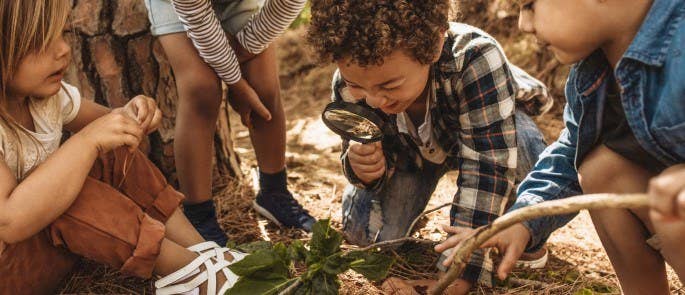
Feelings Board
This is a very simple strategy that not only allows children time and space to consider their own emotions, but it also gives the adults working with them a quick visual indication of how they are feeling.
These are particularly suited to primary classrooms or form rooms, but the strategy can be adapted. Everyone has either their name or a photograph of them that they can attach to a board. On the board, there are areas for different emotions (happy, angry, worried, tired, sad, etc.). At the start of the day, the children choose where to place themselves. They can move their name or photo during the day if they need to.
You, or a member of your team, can then follow up the board with a conversation if needed.
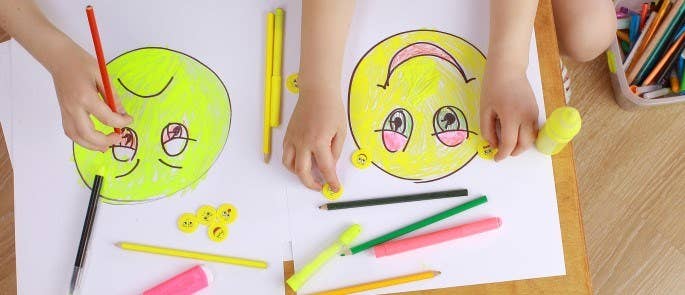
Worry Monsters
A worry monster is a creature who eats worries. There are specialised toys, or you can make something yourself – all it needs is a ‘mouth’ that can fasten. Children write their worry on a scrap of paper and feed it to the worry monster.
Sometimes, just the act of writing the worry down and disposing of it is enough; other times the child may want to talk about what is worrying them. You will need to agree on a way of children indicating this. (An easy way to do it is for them to put their name on the worry if they want to discuss it.)
The strategy works just as well with a box for worries, which might appeal more to older children.
Strategies for Supporting Individual Children with Anxiety
The strategies below can be used for everyone in your class (although this will take a little more time and resourcing), or for particular individuals.
Feelings Scales
The Incredible Five Point Scale was developed by Kari Dunn Buron, and provides a way for children to assess and respond to their feelings. Working with the child, you develop a scale which charts emotions from ‘one’ (where they feel calm and ready to learn) to ‘five’ (where negative emotions are extremely heightened).
You should work with the child to develop descriptions of their feelings (these can be depicted visually) as they escalate. This process means that it is personalised to them – feelings manifest in different ways for different individuals – and that they are actively involved in recognising and naming their emotions.
Alongside the feelings descriptors, you can document techniques to help children regulate those feelings. For example, at ‘three’, a child may start to feel hot and have butterflies in their stomach as panic starts to rise. The strategy for this level could include some deep breathing, a break from the current activity, or asking an adult for help.
Cards can be produced to remind everyone involved of these levels and strategies. Moving forward, a child would recognise that they are at a ‘three’ and have an instant reminder of how to bring that feeling down to a lower level. Adults can help scaffold this, depending on the level of support the child might need, and how familiar they are with their own scale.
This is an incredibly versatile technique. They are easy to construct and free templates can be found online. It also works across different age ranges and can be adapted to support specific Special Educational Needs. You can focus on a particular emotion – anxiety or anger, for example – depending on the child’s needs.
You can also tie the scale into their personal interests, which is particularly powerful for autistic children. You could use pictures relating to their interests to illustrate the steps of the scale – for example, Pokémon characters in their different evolutions, or emojis.

Happiness Boxes or Self-Soothe Boxes
Another versatile strategy, this is essentially a box filled with objects that the child or young person finds calming or soothing in times of anxiety. The individual is completely in control of what goes in there and can access the box when they are feeling anxious.
Some possible multi-sensory content could include:
- Photographs of important people, pets, and places.
- Different materials – the sensory aspect of these could be calming, or they could be important objects in themselves.
- Toys.
- Scents – this could be in the form of scent bags, or scented materials.
- Mindfulness activities.
- Notes of inspiration or affirmation.
After compiling the box, you would need to discuss how to use it and when they might access the box. A technique such as this enables children and young people to practise and rehearse strategies that help them cope with their emotions, resolve inner conflict, and bring them to a calm emotional state (Carpenter & Cockbill, 2020).
Apps to Help with Anxiety
Among the resources for children with anxiety, there are a range of apps that children could access on class devices, or their own phones, which are developed to help reduce anxiety.
Some of these have trackers, so that children and young people can chart their feelings, as well as a range of things to do to help alleviate that anxiety. This might include mindful breathing exercises, or doodling to reduce stress. There are apps targeted at different age groups, and some include community functions where young people can share their experiences. Amongst others available are Headspace for Kids, and the SAM app.
Individual Accommodations
Internal and external factors that cause anxiety can differ from person-to-person. The key to this strategy is to really get to know, and listen to, the child or young person you are trying to support.
For instance, a child may become extremely anxious when completing a timed activity – for example, a times table test. Once you know this you can ask yourself – do they really need to be timed? Can I present this activity in a different way to ease their anxiety?
More often than not there is an accommodation you can make. It could be as simple as sitting a child at the end of a row during assembly, so they can easily get an adult’s attention, or letting a young person pack up their belongings a few minutes before the bell, so their anxiety about being late for their next class is alleviated.
You can often make a huge difference to an anxious child’s experience by making small, informed personal accommodations.

In summary, it is extremely likely that you will teach or care for children who are struggling with anxiety. By understanding how anxiety might manifest in children and young people, you can be alert and offer support as soon as possible. The strategies and tips in this article focus on providing opportunities for the children you teach to recognise and regulate their anxiety. Aiming to develop their overall resilience, combined with individual personalised strategies to meet their needs, you can help improve the experience of children with anxiety, enabling them to reach their learning potential. We hope this article has given you some helpful suggestions for your practice.
Further Resources:
- Child Mental Health Training
- Supporting Pupils with SEN in the Classroom: Guidance for Teachers
- How to Encourage Children to Express Feelings & Emotions
- Mental Health Resource Pack for Schools
- Child Mental Health Quiz
- What is an Early Help Assessment?
- Sensory Needs in the Classroom


